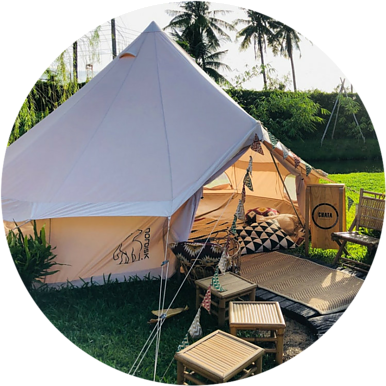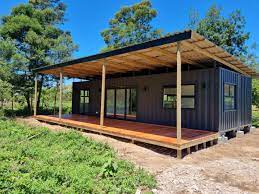Alternative Housing in times of conflict and displacement is a challenge. Refugees often struggle to find safe and secure housing options. Traditional housing solutions, such as refugee camps or temporary shelters, may not always be adequate or sustainable for long-term displacement situations. In this blog post, we will explore alternative, long-term housing options that can help refugees establish stable and secure living conditions.
Tiny Houses and Prefab Homes
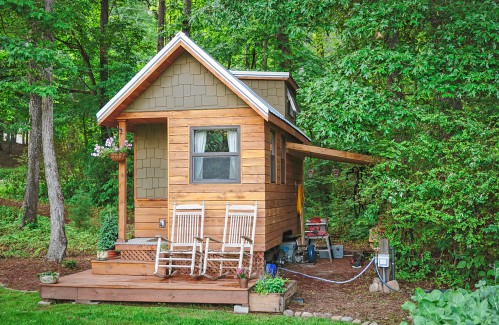
Tiny houses and prefab homes are becoming popular alternatives for long-term housing. These homes are designed to be compact, cost-effective, and energy-efficient. They can be built using sustainable materials and can be easily transported to different locations.
Tiny homes and prefab homes can be customized to meet the specific needs of refugees and can provide a sense of ownership and privacy. These homes are also easy to maintain and can last for many years.
Advantages
- Multipurpose – Tiny houses and prefab homes can be built using a variety of construction methods and materials, such as wood, metal, or concrete. These homes are designed to be compact and can be customized to meet the specific needs of refugees. The construction process typically involves building the structure off-site and then transporting it to the desired location. The home can then be assembled and connected to utilities such as water and electricity.
- Portability – Tiny homes can be constructed on a trailer and can then be transported, complete to the desired location. Some of these structures can be transported disassembled to the location, to be errected there.
- Weather Resistant – These homes are generally weather resetant and can be heated or cooled, making for a comfortable home.
- Services – These home can be conected to services like electricity, sewage or water, if they are available.
Disadvantages
- Cost– Although tiny or prefab houses are less costly that traditional housing, they are still costly. When people flee their homes in times of conflict, They become refugees. In most cases, refugees abandon most of their belongings and often without cash. It times of conflict, banking facilities are mostly absent leaving the refugees without funds to build costly houses.
- Weight – These homes are heavy and will require a truck to transport most of them.
- Transportation – This takes planning and makes it difficult to flee quickly.
- Erection – Many people will not have the skills or tools necessary to situate a tiny home orerect a prefabe home. This requires learning and planning for the aquisition of the nessessary tools.
Community-Based Housing
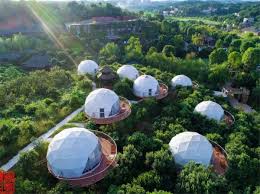
Community-based housing is a concept that is gaining traction in many parts of the world. This type of housing involves the creation of intentional communities.
Advantages
- Cost – Communes will bring down the cost of the communal areas like Kitchens, recreatio/living areas etc.
- Multi-purpose – Tiny houses and prefab homes can be built using a variety of construction methods and materials, such as wood, metal, or concrete. These homes are designed to be compact and can be customized to meet the specific needs of refugees.
- The construction process typically involves building the structure off-site and then transporting it to the desired location. these structures can then be The home can then be assembled and connected to utilities such as water and electricity.
- Speed of loading – can be loaded on a small trailer or even in the boot of your cat or on roofracks.
Co-Housing
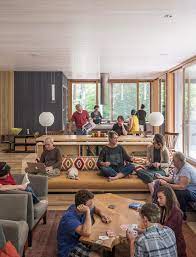
Co-housing is a housing concept that involves shared living spaces and resources. Co-housing communities can be designed to meet the specific needs of refugees and can provide them with a sense of community and support. In a co-housing community, residents share common spaces such as kitchens, living rooms, and gardens.
They also share resources such as tools, cars, and childcare. Co-housing can help refugees save money on housing and can provide them with a strong support network.
The construction process for co-housing will vary depending on the specific design and materials used. Generally, the process involves building individual living units or apartments and then connecting them to shared resources such as kitchens, living rooms, and gardens. The community may also involve shared facilities such as laundromats, gyms, or community spaces.
Modular Housing
Modular housing involves the use of prefabricated units that can be quickly assembled to create a larger housing complex. These units can be designed to meet the specific needs of refugees and can be easily transported to different locations.
Modular housing is cost-effective, energy-efficient, and can be customized to meet the unique needs of refugees. It is also easy to maintain and can be quickly assembled in emergency situations.
The construction process for modular housing typically involves designing and manufacturing the individual units off-site. Once the units are complete, they can be transported to the desired location and quickly assembled on-site. The units can then be connected to utilities such as water and electricity.
Container Housing
Container housing is another alternative housing option that is gaining popularity in many parts of the world. This type of housing involves the use of shipping containers that are repurposed to create homes and living spaces.
Container housing can be customized to meet the specific needs of refugees and can be easily transported to different locations. This type of housing is also cost-effective and can be quickly assembled in emergency situations.
The construction process for container housing typically involves designing the layout and cutting openings for doors and windows. The containers can then be insulated and finished with materials such as drywall or wood panelling. The containers can be stacked or connected to create larger living spaces and can be connected to utilities such as water and electricity.
Earthbag Housing
Earthbag housing involves the use of bags filled with soil or other materials to create a strong and sustainable housing structure. This type of housing can be easily constructed using local materials and can provide refugees with a safe and secure living environment.
Earthbag housing is also energy-efficient and can be designed to meet the unique needs of refugees. This type of housing is easy to maintain and can be quickly assembled in emergency situations.
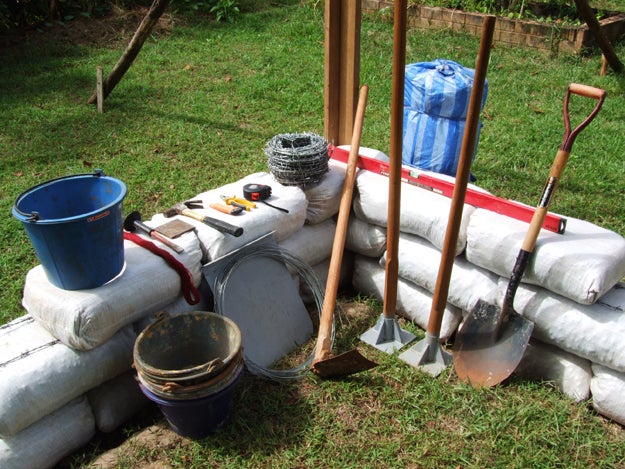
The construction process for earthbag housing typically involves digging a foundation and laying the first row of bags. The bags are then filled with soil or other materials and compacted to create a solid structure. Additional rows of bags can be added to create the desired height of the structure.
Once the structure is complete, it can be finished with materials such as plaster or stucco (It is made from a mixture of cement, sand, and water, along with other additives such as lime and acrylics). It is also used in modern construction for its durability, fire resistance, and low maintenance.
Geodesic Domes
A Geodesic Dome makes an awesome home. I know that it conjures up visions of a huge tent in which you will live, but what a tent? This Tent can be big or small. It can be built with Canvas, Glass, Plastic wood or whatever you can dream up.
Fancy a Mezzanine floor or Double Storey? Any and all of it is possible. But first, we must determine the weather conditions and type of terrain where the dome will be erected.
Conclusion
In conclusion, traditional housing solutions such as refugee camps or temporary shelters may not always be adequate or sustainable for long-term displacement situations. Alternative, long-term housing options such as tiny houses, prefab homes, community-based housing, co-housing, modular housing, container housing, and earthbag housing can provide refugees with safe, secure, and sustainable living environments. These housing options can also provide refugees with a sense of community and support, which can help alleviate the stress and isolation that often come with displacement. By exploring alternative housing options, we can help refugees establish stable and secure living conditions, which can ultimately help them rebuild their lives.
It is a good idea to start planning your housing now and ensuring that you have the skills and the means to build your shelter.

“It is better to have prepared and never to need it than to be unprepared and be in desperate need of it”.
Be Aware. Be Safe. Be Prepared!

